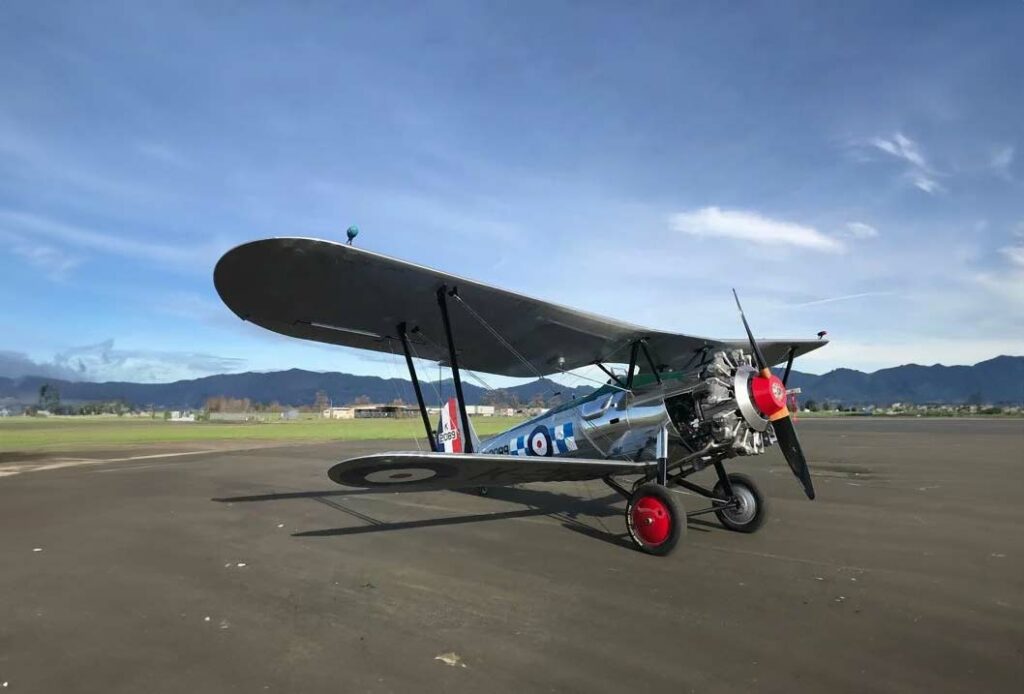The Bristol Bulldog, a British 1930s single-seat biplane fighter, known for its Bristol Jupiter radial engine, robust construction, and agility in the air. This article provides an extensive overview of the Bristol Bulldog, covering its historical development, design aspects, performance characteristics, and military usage. It emphasizes the Bulldog’s role in advancing British military aviation during the interwar period.
The Bristol Bulldog stands as a significant aircraft in the annals of British military aviation history. As a mainstay of the Royal Air Force (RAF) during the interwar years, it represented a critical transition in fighter aircraft design and capabilities. This article explores the development, design, performance, and operational history of the Bristol Bulldog.
History of the Development of the Bristol Bulldog:
In the aftermath of World War I, the field of aviation was in a state of rapid evolution. The need for advanced military aircraft was driven by emerging aerial combat tactics and technological advancements. The Bristol Bulldog was developed in this context, as part of Britain’s effort to maintain a leading edge in military aviation.
The development of the Bulldog was initiated by the Bristol Aeroplane Company, led by their chief designer, Frank Barnwell. The project began in the early 1920s with the aim of creating a fighter that could outperform existing aircraft in terms of speed, maneuverability, and armament. The Bristol Bulldog first flew in 1927, marking a significant advancement in fighter design for the RAF.
The era was characterized by a shift from the biplane designs of World War I to more advanced configurations, incorporating new technologies like all-metal construction and more powerful engines. The Bulldog was designed in response to these trends, seeking to provide the RAF with a robust and capable aircraft for air superiority.
Design of the Bristol Bulldog:
The Bristol Bulldog’s design was a reflection of the technological advancements of its time. It was a single-seat biplane with a wingspan of 33 feet 10 inches (10.31 meters) and a length of 25 feet 2 inches (7.67 meters). The Bulldog featured a mixed construction, with a metal frame and fabric covering, typical of the period.
Powered by the Bristol Jupiter radial engine, the Bulldog was capable of producing around 440 horsepower (328 kW). This engine choice was significant, offering a blend of reliability and performance.
The design included several innovative features, such as an enclosed cockpit, a first for RAF fighters, and a robust landing gear to handle rough airfields. However, its biplane configuration and fabric covering limited its maximum speed and altitude performance compared to later monoplane designs.
Despite these limitations, the Bulldog was a step forward in aerodynamic efficiency and pilot safety, influencing subsequent fighter designs.

Performance of the Bristol Bulldog:
The performance of the Bristol Bulldog was notable for its era. The Bristol Jupiter engine enabled a top speed of around 174 mph (280 km/h), with a service ceiling of 29,300 feet (8,931 meters) and a range of approximately 300 miles (483 km).
When compared to contemporaries like the American Boeing P-26 Peashooter or the French Dewoitine D.500, the Bulldog was competitive in terms of maneuverability but lagged slightly in speed due to its biplane design. Nonetheless, its robust construction and reliable engine made it a respected aircraft among pilots.
Military Use and Combat of the Bristol Bulldog:
The Bristol Bulldog was primarily used by the RAF, with several other countries also operating the type. Its armament typically consisted of two .303 inch Vickers machine guns, making it effective in air-to-air combat.
The Bulldog was not extensively used in major conflicts but played a vital role in air defense and pilot training during the interwar period. It was involved in various minor skirmishes and was valued for its reliability and operational effectiveness.
The aircraft was eventually replaced by more advanced monoplane designs, such as the Hawker Hurricane and Supermarine Spitfire, as technology and tactical requirements evolved.
The Bristol Bulldog was a key aircraft in the development of military aviation between the World Wars. Its design, performance, and operational history reflect the rapid advancements in aviation technology during the interwar period. The Bulldog not only served the RAF effectively but also set the stage for the development of more advanced fighter aircraft, leaving a lasting legacy in the history of military aviation.
Back to the Warbirds section.